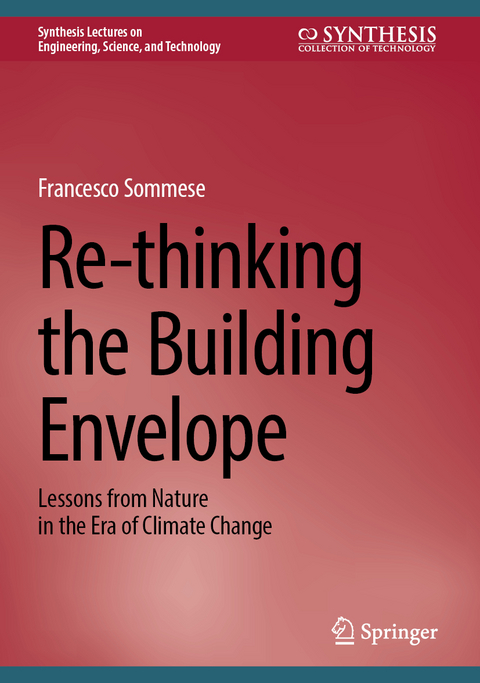
Re-thinking the Building Envelope
Springer International Publishing (Verlag)
978-3-031-69478-3 (ISBN)
This book illustrates the potential of nature when it comes to rethinking the role of the building envelope, which is responsible for energy flows between the internal and external environment, in the era of climate change. Nature has always inspired architects and engineers in the design of structures and buildings, but its role has been limited to a simple morphological imitation with aesthetic value. Today, however, thanks to the biomimetic discipline, which imitates the functional processes of nature, it is possible to transfer nature's adaptive strategies to architecture and promote the design of buildings and architectural structures that adapt to the surrounding context and respond passively to environmental changes. The use of advanced and innovative technologies, combined with the use of smart and self-responsive materials, favours the creation of adaptive and responsive dynamic envelopes, capable of adapting their performance to the changing conditions of the environment. In this way, the envelope is no longer seen as a static element, but as dynamic and able to adapt to its context by playing an active role. After establishing a general framework for the climate adaptive building envelope and analysing the adaptation strategies of natural organisms, this book provides an overview of the biomimetic discipline applied to architecture and building technology. The analysis of emblematic and recent case studies, together with advanced techniques and materials and the illustration of biomimetic design methods, gives this text an added value that promotes the understanding of the different phases necessary to move from nature to architectural technologies. This book is an indispensable tool for researchers in the field to understand an innovative and advanced concept that meets the needs of the time. In addition, it can also help façade manufacturers to understand the current directions of scientific-academic research in order to propose new technologies to the market.
Francesco Sommese
Building Systems Engineer and Ph.D.
He holds a Ph.D. in Civil Systems Engineering, with honours, for a thesis entitled "Biomimetic strategies for the design of climate adaptive building envelopes: a problem-based methodological approach".
He is a post-doctoral researcher and lecturer in Architectural Engineering at the Department of Civil, Building and Environmental Engineering (DICEA) of the University of Naples Federico II, dealing with innovative and sustainable issues for the building envelope, nature-based solutions, bioclimatic architecture and green building, also applied to rural architecture. He holds a Postgraduate Diploma in Engineering for Cultural Heritage. He has been a member of the organizational secretariats of national conferences and has received several awards for his research activities. He is the author of scientific publications in prestigious international journals and has participated as a speaker in national and international conferences. He is a reviewer for international academic journals and co-supervisor of theses degrees.
The building envelope.- Adaptive building envelope.- Biological investigation.- Nature and architecture.- Dynamic functional solutions.- From nature to architecture: methods and approaches.- Conclusions and future perspectives.
| Erscheinungsdatum | 15.09.2024 |
|---|---|
| Reihe/Serie | Synthesis Lectures on Engineering, Science, and Technology |
| Zusatzinfo | XIX, 107 p. 52 illus., 47 illus. in color. |
| Verlagsort | Cham |
| Sprache | englisch |
| Maße | 168 x 240 mm |
| Themenwelt | Technik ► Architektur |
| Schlagworte | adaptive solutions • biology-driven • biomimetic • building envelope • climate change • Smart Materials |
| ISBN-10 | 3-031-69478-3 / 3031694783 |
| ISBN-13 | 978-3-031-69478-3 / 9783031694783 |
| Zustand | Neuware |
| Informationen gemäß Produktsicherheitsverordnung (GPSR) | |
| Haben Sie eine Frage zum Produkt? |
aus dem Bereich


